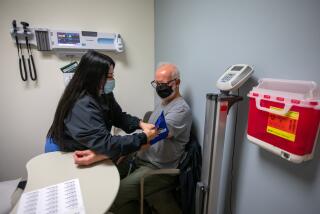Elective Services Boost Dentists’ Income
He’s 81 now, this former Boston businessman, and when he retired to a Southern state some years back, one of the most treasured things he left behind was his friend and dentist of 50 years, Dr. Wallace J. Gardner of Cambridge.
In the South, the executive found a new dentist, who proposed a $5,000 treatment plan involving multiple visits (including a three-hour session) to replace some of his gold crowns and change his bite. The executive, who asked that his name not be used, was outraged. “I had never had any trouble. I still had all my teeth.”
“This really upset me very much,” says Gardner, waving the letter from his friend as he stood amid dozens of plaster casts of teeth in his work room not long ago. The treatment the new dentist proposed was not only expensive, but also risky. “You should never put a dental patient in the chair and work on them for three hours at that age,” he says. “It’s too dangerous because of blood clots.”
Most dentists are honest, Gardner and many other dentists insist. But there are also cases such as this one, Gardner says, in which proposed treatments are unnecessary--and possibly dangerous to boot.
Unnecessary dentistry is a touchy subject among the nation’s 155,000 dentists, who’ve already had more than enough bad press lately.
In August, Medicaid fraud investigators in Florida charged that criminals were snatching poor kids off street corners and delivering them to dentists for unneeded cleanings, X-rays and even extractions. The same week, the American Dental Assn., huffy that the nation’s third-largest dental insurer, Aetna Inc., had claimed that certain dentists were overcharging patients, retaliated with a class-action suit against the insurer.
In terms of outright fraud, the frequency is probably low. But what about more subtle things, such as crowns that a person doesn’t really need? Routine removal of wisdom teeth in teenagers? Very frequent cleanings? In truth, there’s little data on these softer sins.
But the temptation for dentists to blur the lines between necessary procedures and those that are optional or cosmetic clearly exists.
A century ago, most Americans lost their teeth by middle age, according to last year’s surgeon general’s report on oral health. Now, thanks to widespread fluoridation of the nation’s water supplies, most middle-age Americans can expect to keep their teeth throughout their lives, and many kids have few or no cavities.
Indeed, this dramatic improvement in oral health is one of the 10 greatest public health advances of the last century, notes Dr. Raul Garcia, chairman of health policy and health services research at Boston University School of Medicine.
But with fewer cavities to fill, dentists have had to turn to other procedures to boost their incomes, says Dr. Marv Zatz, a New Jersey dentist who now works as a dental insurance consultant for Towers Perrin, a health, welfare and retirement consulting firm.
“Dentists have changed their whole paradigm,” he says. Today, “much of what they do is elective,” including tooth whitening, braces for adults and replacing dark fillings with white ones.
Some dentists go so far as to urge patients to have their old, amalgam fillings (which contain tiny amounts of potentially toxic mercury) replaced--a practice that the National Institute of Dental and Craniofacial Research does not recommend.
One of the toughest critics of dentistry today is Dr. Gordon Christensen, a Provo, Utah, dentist who is on the editorial board of the Journal of the American Dental Assn. In a recent issue of that journal, he blasted fellow dentists for “having a commercial, self-promotional orientation” and “planning and carrying out excessive treatment.”
Many dentists and plastic surgeons “may make something sound as though it’s absolutely necessary when, in fact, it’s elective,” he added in a telephone interview. Since 50% of the average dentist’s income is now from cosmetic work, he said, “people should be told what’s necessary and what’s not.”
Making matters worse, other critics say, is that, compared with doctors, dentists have few national guidelines on specific practices and are more likely to work alone--with less professional scrutiny.
Take wisdom teeth, for example.
Many dentists believe that wisdom tooth extraction, for which Americans spend $2 billion a year, should be done in teenagers to avoid cysts or infections that might develop around the teeth in the future. Moreover, they say, young people heal so much more quickly than older ones that it makes sense to extract the teeth in late adolescence.
But no one really knows how much long-term benefit, if any, there is to routine extraction of wisdom teeth that have not yet caused problems. The most recent government recommendations on the subject are 22 years old, which means they don’t include recent data from studies that question routine extraction.
One relatively recent study, for instance, published in 1990 in the International Journal of Technology Assessment in Health Care suggested that instead of routinely pulling healthy wisdom teeth, it might make more sense, in terms of both economic costs and disability, to extract only those teeth that are impacted (emerging crookedly or stuck partway out of the gums) and clearly causing problems.
A British analysis published last year in Health Technology Assessment reviewed 40 other studies and came to a similar conclusion--that routine removal of wisdom teeth as a preventive measure is often not justifiable.
In the U.S., oral surgeons, whose income depends heavily on wisdom tooth extraction, are currently conducting their own, multi-center study on the issue, says Dr. Louis Rafetto, a Wilmington, Del., oral surgeon and spokesman for the American Assn. of Oral and Maxillofacial Surgeons.
But those results are several years away, which means patients are on their own trying to assess a dentist’s advice.
One Framingham woman, who asked that her name not be printed, says that both her daughters, now in their 20s, were “railroaded” into wisdom tooth extractions. “Nobody was willing to even consider whether it was necessary to take them all out,” she says.
And then there’s the issue of how often people need to have their teeth professionally cleaned. The dental association says that’s a judgment call best done case by case, says Dr. Matthew Messina, a Cleveland dentist and ADA spokesman.
But the recommended interval between cleanings seems to keep getting shorter. Traditionally, dentists said cleanings were needed every six months to prevent periodontal disease, an inflammatory response to bacterial infection that destroys the gums and bones around teeth. Seeing a dentist that often is a also good way to detect cavities or other problems, they argue.
But that six-month interval has changed to cleanings every three or four months for many people, says Dr. Richard Beyers, a dentist in Kitchener, Canada, and author of a recent paper in the Journal of the Canadian Dental Assn.
That may make sense for people who are too physically or mentally impaired to brush and floss regularly. Short intervals also may be essential for people who naturally “form calculus very fast,” says Dr. Glenn Clark, a specialist in hard-to-diagnose oral medicine at the UCLA School of Dentistry. (Calculus is the mineral gunk on teeth that bacteria feed on, triggering periodontal disease.)
But in actuality, there’s so little evidence on the correct interval for cleanings that the authors of a 1994 study in the Journal of Dental Education concluded “it may be time to call all clinical dogma regarding treatment of adult periodontitis into question.”
So, what’s the answer?
As the bumper sticker says, “Question authority.” If your dentist recommends a procedure that strikes you as overly expensive or invasive, ask whether you really need it. If you’re not convinced, get a second opinion.
And if you do go for a second opinion, take your X-rays with you. There’s no point in subjecting yourself to the extra (albeit low-dose) radiation that X-rays entail or to the expense.
When to Ask fora Second Opinion If you want a second opinion on a dental procedure and don’t know where to turn, try calling a local dental school. Most states have at least one. Procedures for which you may want a second opinion include the following:
Crowns: These can run $600 or more. Crowns are made of porcelain or plastic and are usually put on a tooth that has broken or in which a cavity is too large for a simple filling.
Sometimes, they are used to provide a better contour for the tooth. If a crown is purely to change the appearance of a tooth, that’s an elective procedure. If it’s to enable you to chew better, it’s probably not elective.
Bonding: This is a procedure in which the dentist etches the surface of the tooth and then covers it with a tooth-colored plastic material to provide a better appearance. It is often an elective procedure.
Deep scaling: This probing around the gums to remove debris is necessary--and therefore not elective--if you have periodontal disease, but is usually not necessary if you don’t. Whether you really need it is a judgment call by the hygienist and dentist.
Implants: These are permanent replacements for lost teeth. They consist of anchors that are surgically placed deep in the jawbone, to which posts, and then crowns, are attached. They are not usually considered elective.
Replacement of black fillings with white ones: If the old fillings are still functional, this is primarily a cosmetic procedure, therefore elective. Filling very tiny cavities--as opposed to watching and waiting to see if they get worse--is also often considered elective.
More to Read
Inside the business of entertainment
The Wide Shot brings you news, analysis and insights on everything from streaming wars to production — and what it all means for the future.
You may occasionally receive promotional content from the Los Angeles Times.










